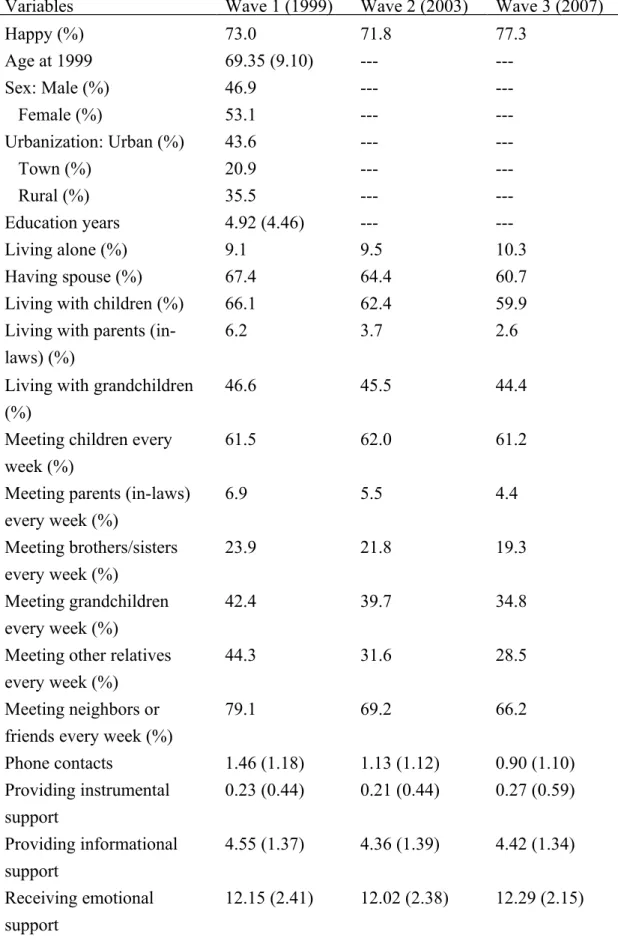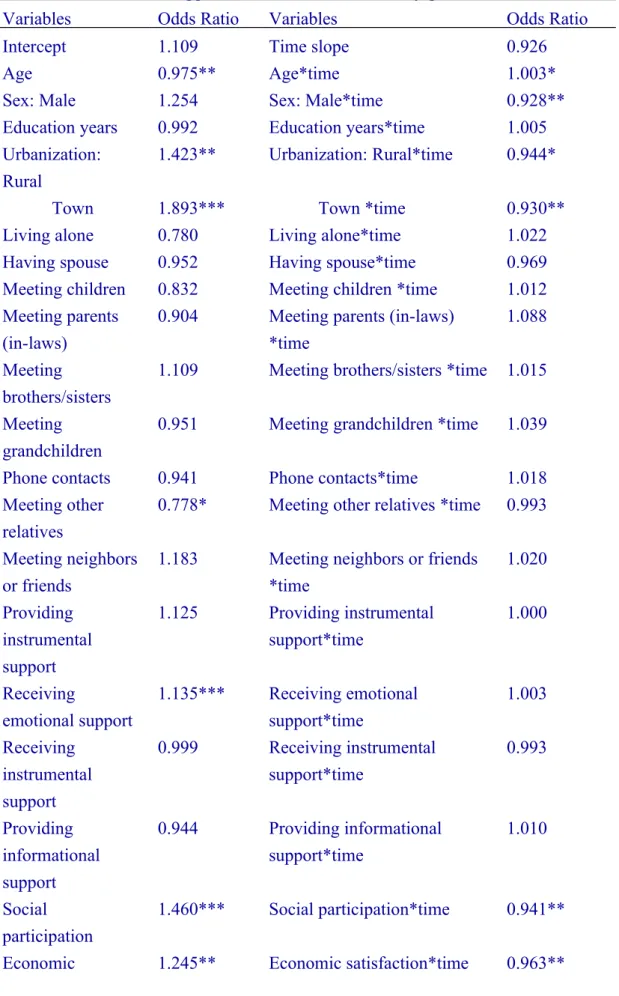Social connections and happiness among the elder population of Taiwan
全文
數據


相關文件
In view of the large quantity of information that can be obtained on the Internet and from the social media, while teachers need to develop skills in selecting suitable
形成 形成 形成 研究問題 研究問題 研究問題 研究問題 形成問題 形成問題 形成問題 形成問題 的步驟及 的步驟及 的步驟及 的步驟及 注意事項 注意事項 注意事項
The differential mode of association: Understanding of traditional Chinese social structure and the behaviors of the Chinese people. Introduction to Leadership: Concepts
Schools can administer APASO-II scales/subscales at diff erent times of the school year to achieve different purpose s, e.g. to assess the effectiveness of an intervention progra m
Schools can administer APASO-II scales/subscales at diff erent times of the school year to achieve different purpose s, e.g.. to assess the effectiveness of an intervention progra
The elderly health centres provide people aged 65 or above with comprehensive primary healthcare services which include health assessments, physical check-ups, counselling,
It costs >1TB memory to simply save the raw graph data (without attributes, labels nor content).. This can cause problems for
They are: Booklet (6) – Healthy Community, exploring the communicable and non- communicable diseases and how they affect community health so that students are able to